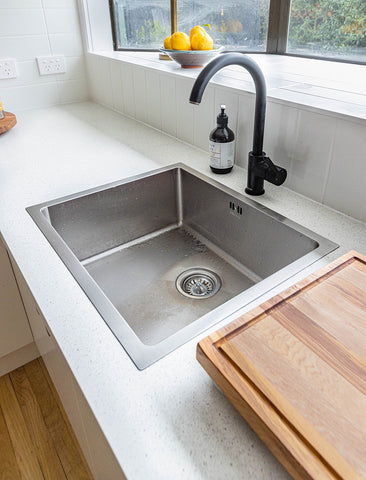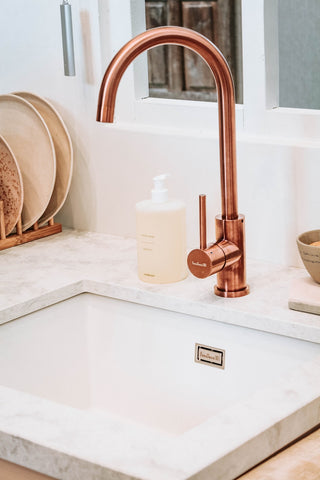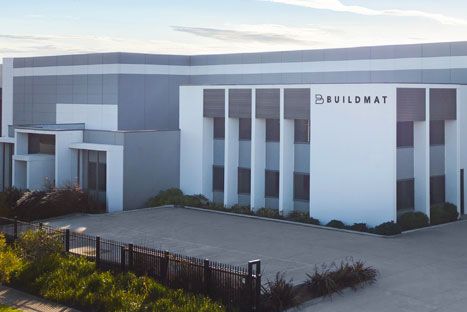Do I Need an Overflow in My Kitchen or Laundry Sink?

Have you noticed the small hole on top of your kitchen sink, laundry, and bathroom basins? Well, it's not just a random hole. It is designed for a purpose and is called an overflow hole.
In this article, we will explain more what this hole is and how it works. We will also give you some cleaning tips on how to maintain the overflow hole to make it work efficiently. Let us explore this part of your basins now.
What is the Overflow Hole in your Kitchen sink, Laundry, and Bathroom basins?

Image Source: C. Hill
The overflow hole in your basins is a small ditch wherein excess water in your basins passes through it to prevent your sinks from overspilling and flooding. It diverts the water if ever someone leaves the faucet open or there are plumbing problems.
This prevents your kitchen, bathroom, and laundry room from overflowing with water. It is allocated just 1 inch from the top mount of your vessel sink and tub.
How Does an Overflow Hole Work?
The overflow hole works in two ways. The first function of the overflow hole is to help your kitchen stainless steel sinks drain faster. The air flows freely in the overflow hole into the drainpipe, and therefore drives the water to drain quickly to the waste pipe.
The second is when the faucet is left running unknowingly, the water will flow into the overflow hole down to the waste drainpipe. This prevents the water from spilling over the top of your kitchen sink or bathroom sink drain and avert flooding in your kitchen or bathroom.
What Does a Sink Overflow Hole Connect to?
The overflow hole has an overflow drain pipe that runs at the back of the sink and is connected to a waste drain pipe that leads to the septic tank then to the main sewer drain.
The drainpipes can be seen. On the other hand, if you are using a freestanding bathroom sink, the pipes are hidden inside the pedestal.
How to Maintain the Overflow Hole in Your Sinks
The overflow channel in your basins must not be blocked to ensure the water flow down the drainpipe or spouts. So, the overflow hole must be clear from dirt and other debris.
You also have to maintain it by cleaning it often, as it can often produce a foul smell from built-up grime and dirt. In this case, you have to remove any dirt around your overflow hole or remove anything that could be stuck in the overflow pipe. We will discuss further how to clean the overflow hole below.
How to Clean the Overflow Hole

Image Source: Visual Stories, Micheile
The overflow hole can be dirty from time to time due to solids, leftovers, or body fluids accumulated when washing. This may induce a bad smell too. The following are some ways how to clean the overflow hole:
Using Boiling Water
You will need a pipe cleaner or a brush that can clean your sink, a funnel that can withstand boiling water, and two or three quarts of boiling water. Avoid using bleach as this may damage your stainless-steel sink because it has a chrome content.
The first step is to clean the overflow hole using a pipe cleaner or a brush. Remove the specks of dirt, buildup, or stains by pushing the brush in and around the overflow hole. After removing the dirt, get the funnel and stick it in the overflow hole.
Get the boiling water and slowly pour it into the funnel to flush the dirt and buildup. You can repeat the process if you still see some dirt and stains in the overflow hole until it gets clean. Wear protective gloves to prevent spilling the boiling water onto your bare hands.
Using Baking Soda and Vinegar
Make a DIY cleaning solution by mixing a teaspoon of baking soda and one-half cup of vinegar. Then, get a funnel and pour the mixture slowly into the overflow hole.
Using a small brush cleaner or an old toothbrush, dip it into the mixture and brush around and inside the hole of the overflow until the grime and stains are removed. Once cleaned, get a few cups of boiling water and slowly fill it into the overflow pipe to remove all stains and smell.
Do I Need an Overflow in my Kitchen Sink?
There are definitely benefits to having an overflow in your kitchen sink because of its functions, such as preventing water from overspilling in a situation where you leave the faucet open with the plug pushed in.
However, is it a necessary feature? Most kitchen sinks in Australia nowadays don't have an overflow due to it being large and therefore harder to overfill. Flooding for double-bowl sinks is also less likely to occur because the second bowl acts as a backup for any spilled water before it will overfill the counter. Another reason why you may not want an overflow is sanitary reasons. The build-up of germs and bacteria in the overflow hole can be unsanitary during food preparation and can be a chore to always keep it clean.
It's all a matter of personal preference and needs whether or not you need an overflow in your kitchen sink. For some, it can be essential to prevent flooding especially if you want to be super careful because there are children, or because you have a single-bowl kitchen sink that is on the smaller side and you believe it is necessary to have for your sink. Just keep in mind that avoiding flooding your sink comes down to the prevention of clogging your drain and how you manage your water usage.
Do I Need an Overflow in my Laundry Sink?
Much like kitchen sinks, most laundry sinks don't have overflow holes because the drainage system allows for normal flow unless there is a clog in the drain preventing it from draining.
Again, the pros and cons of having an overflow in your laundry sink are much like your kitchen sink wherein it can be beneficial to prevent flooding when filling your tub with water as you wash your clothes, though will also need regular cleaning to prevent it from producing dirt, grimes and bad smell.
It is all up to your preference on whether you need an overflow. Just keep in mind that the extra feature could mean paying for extra costs.
Can I Put an Overflow Myself in My Sink if it Doesn't Have One?
Since a lot of kitchen sinks and laundry tubs don't have an overflow hole, here is one way of installing one yourself:
Mark the overflow hole in your sink by measuring at least 1 inch from the rim of your tub. Get a hole saw that matches the size of your drainpipe fittings. The drain size must be 1 inch or a little bit smaller. Avoid a tight radius hole. Then, drill the hole. Make sure to be precise and careful, as this will void your sink warranty.
Once done, put a putty to the underneath of the drainpipe up to the hole. Then, screw the bottom until it is tightly fit and the putty squeezes out from the fitting. Remove the excess putty with a wet cloth.
Put a hose to the drain fitting and close it with a clamp. Repeat the process on the drainpipe. Then, test it by pouring a glass of water into the drain. Make sure that there is no leak. If there is a leak, tighten the screw and put a silicone caulk to every joint. If you don't have the experience to DIY this, it's best to call an experienced plumber to install the overflow.
Verdict: Sink overflow or no overflow?
So, is having an overflow hole in your kitchen and laundry sink necessary?
The bottom line is that it is not a necessary feature to have in your kitchen or laundry sink. This is because the drainage pipes in sinks are generally sufficient enough to allow for water to drain smoothly, as long as there are no plumbing issues such as obstructions in the drain pipes or clogging. Kitchen and laundry sinks are also typically deep enough that they won't flood easily.
One main reason you may want them is that you want to be extra careful with flood prevention when you plug your sink, particularly with a smaller sink. That being said, even with an overflow you should never leave the water running on your plugged sink for long periods without supervision to prevent flooding. If you decide that you want a sink with an overflow, make sure to clean it regularly to avoid bacteria and grime building up.
Read More





















































































































































































































